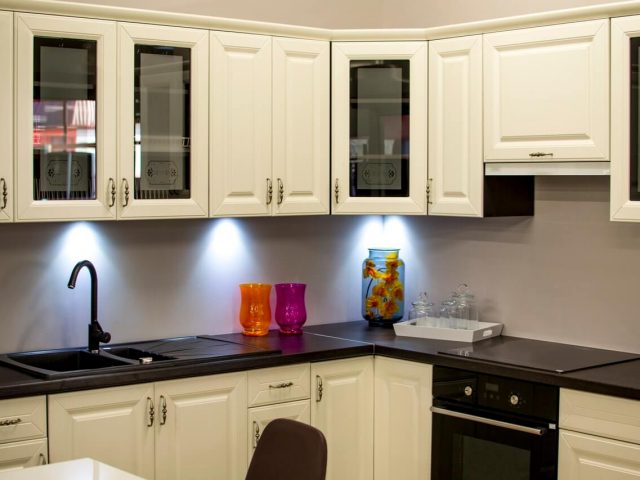Maybe you have asked yourself a time or two…do I really need bread flour to make this bread? Can’t I just use this all purpose flour I have on hand, I mean it does say all purpose, right? So it should be good for all purposes, it says so right on the bag!
Well, sorry to disappoint, but no, it just doesn’t work that way. There is a difference between bread flour and all purpose flour.
Difference between Bread Flour and All Purpose Flour
What is Gluten and Why Does It Make a Difference in Bread?

Gluten is a protein found in flour. When you mix wet ingredients with the flour, the gluten soaks up the moisture and creates elastic strands in the dough. Kneading the bread stretches these bands and the dough becomes more elastic.
When the yeast is added to the mix, the yeast eats the sugar found in the dough and through that process creates carbon dioxide, a gas. This carbon dioxide forms bubbles in the bread. If the gluten is weak, the bubble will form and then pop, and you will not have fluffy bread.
If the gluten is too strong, the bubbles can not grow very big, and you end up with a dense loaf of bread. Getting the gluten percentage in the flour correct is the key to making good bread.

Bread Flour vs All Purpose Flour: What Are They Made Of?
The main difference between all purpose flour vs bread flour showdown is – bread flour is made from hard wheat that is high in protein. Bread flour also contains a small amount of barley flour, vitamin C and potassium bromate.
The barley flour is there to assist the yeast growth. The other additives help make the gluten in the bread flour more elastic and better able to trap carbon dioxide, making a yummy, fluffy loaf of bread.
All-purpose flour is made from hard and soft wheat, and contains less protein than bread flour. All purpose flour that is unbleached has higher protein content than bleached flour. Bleached flour can be used for delicate pastries and cookies, as these types of baked goods do not need much gluten.
It is clear to see there is a difference between bread flour and all purpose flour.

What About the Other Flour We Find at the Grocery Store?
There are a few other types of flour you might see at the grocery store:
Self-Rising flour
Simply put, self-rising flour is flour that has salt and baking powder added to the mix. Recipes that call for self-rising flour usually do not call for salt or baking powder as added ingredients. This type of flour is used for biscuits.
You can’t substitute this flour for bread flour or all purpose flour.
Cake Flour
Cake flour has the least amount of gluten or protein of all the wheat flours. It has about 7-8% protein content. Cake flour is finely milled and generally bleached, so it repels water to an extent, while more readily absorbing fats, giving cake a spongy texture.
Pastry Flour
Pastry flour has a bit more protein, and therefore more gluten than cake flour. It is about 9% protein. Pastry flour makes a soft flakey product, like you want when you are making a pie crust.
You can come close to pastry flour by mixing equal parts all purpose flour and cake flour, if you are in a pinch.
Whole Wheat Flour
Whole wheat, as the name implies, uses the entire wheat kernel, including the bran and germ. It can be as high as 13% or more protein. Making flour with 100% whole wheat yields a very dense bread, as the carbon dioxide has trouble causing large air bubbles to form due to the high protein content.
Can I Use Bread Flour in a Recipe That Needs All Purpose Flour?
Generally no, because the protein content needs to be higher than what is in standard all purpose flour. If you use all purpose flour to make your bread, the bread will not be as soft and chewy as good bread should be.
If you happen to have vital wheat gluten handy you can add a tablespoon or two to the dough and increase the protein content enough to get closer to the gluten contact of bread flour.
Likewise, if you are making cake, and have no cake flour, you can mix a few tablespoons of corn starch, which has no gluten, to lower the overall protein content of all purpose flour.
What Baked Goods Can I Make With Bread Flour, Besides Bread?
So, what else is bread flour good for, besides the obvious-bread making? Great question!
- Pizza Dough – Bread flour makes excellent pizza crust, light, chewy and dreamy. Yum!
- Dinner Rolls – Imagine, buttery soft, chewy dinner rolls paired with pasta and a salad. Delicious.
- Focaccia Bread – A type of Italian flatbread, usually infused with herbs, seasoned with salt and olive oil. This bread can be used for sandwiches or eaten as an accompaniment to a meal.
- Hokkaido milk bread – Super soft airy bread that starts off with a roux. You can find the recipe on King Arthur Flour website.
- Super Soft Cinnamon Rolls – The perfect breakfast of brunch treat, sure to satisfy the sweet tooth in your family. The recipe can be found on the King Arthur flour website.
- Bagels -This high gluten baked good is great made with bread flour.
- Soft Pretzels – One of the best treats we can imagine, a fresh baked pretzel, lightly coated with salt and dipped in melted butter. Some people go to the mall, just to buy a pretzel like this, but you can make these with bread flour.
Tips for Using Bread Flour in Your Baking
- If you want bread that is even chewier than regular bread, add ¼ cup water during the second rise. Add just enough water that the loaf is moist, but can still hold the shape of a hand formed loaf.
- When measuring flour, spoon the flour into the measuring cup, being careful not to pack down the four, which results in using more flour then the recipe calls for.
Measuring by weight is more precise, but not always feasible since recipes often call for volume and not weight measurements. Level off the cup with the edge of a knife. - In order to see if you have kneaded the bread dough enough, get a small ball of dough and stretch it out. If it stretches well and creates a semi transparent window, it is kneaded enough. This window is aptly named the ‘gluten window’, incidentally.
- To determine if the loaf is ready for the oven make a small dent in the loaf with your finger. If the dent remains, the loaf is ready for baking.
- Try and use bottled water when baking bread. Tap water and hard water will affect the rise of the yeast.
- Do not use ingredients that are too cold or too hot when making yeast bread. Hot temperatures can kill the yeast and cool temperatures can slow down the growth of the yeast. Yeast likes a temperature of about 100 degrees to 110 degrees.
We hope you have found a few tips and tricks here to make the best bread possible from home. There is a difference between bread flour and all purpose flour and it was our goal to demonstrate the differences and help you out with substitutions in a pinch.
Thanks for reading and Happy Baking!




